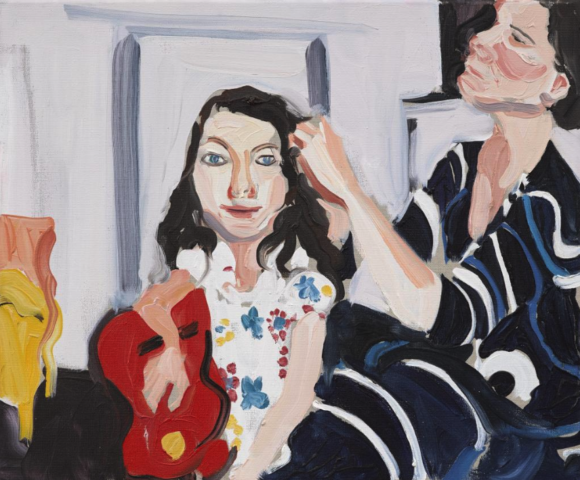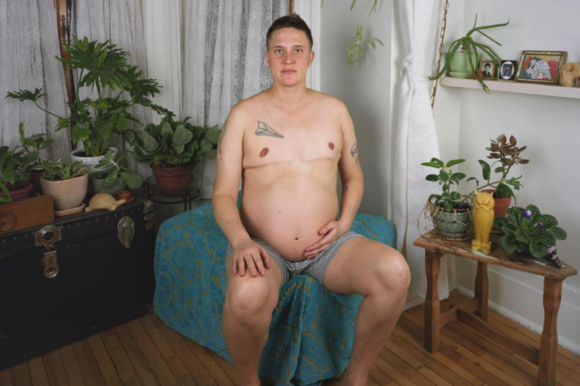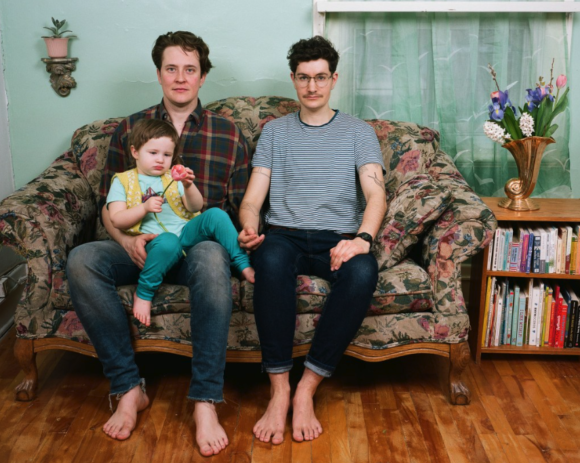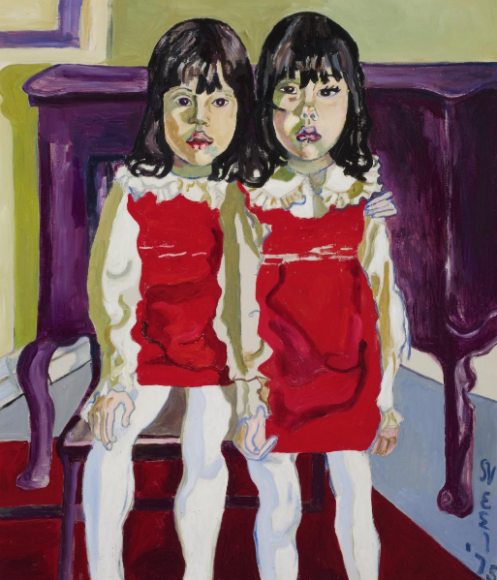I blundered into Real Families at the Fitzwilliam Museum in Cambridge expecting something warm and gooey. I emerged feeling slapped about and challenged. On the surface, it’s an examination of the way artists have represented the family in their work. Under the surface, it’s another skirmish in the culture wars.
I was expecting something gooey because I’ve been making a TV series about mannerism, the elusive art movement that sprang up in Europe around 1520 and sizzled away interestingly until around 1600. Squeezed between the Renaissance and the baroque age, mannerism gave us much that was new. In particular, it gave us women artists.
Properzia de’ Rossi, Lavinia Fontana, Catharina van Hemessen and Sofonisba Anguissola all emerged in the mannerist epoch. They were new voices with a new interest in new subjects — one of which was the family. Anguissola’s paintings of her sisters and parents were pretty much the first instances in western art of an artist granting us intimate access to their household.

I expected Real Families to be a continuation of that story: an aesthetic update on the family in art. Indeed, that is basically what we get. What has changed — dramatically, screamingly — is the definition of a family. At this event, transgender men are pregnant, babies are born in test tubes, Mum and Mum, and Dad and Dad, replace Mum and Dad, and Anguissola’s fantasy of a smiley nuclear tribe is thrust into the shredder.
Curated by Susan Golombok, professor emerita at the Centre for Family Research in Cambridge, the show feels initially like a PowerPoint presentation of Golombok’s investigations into family life. The first thing we see isn’t art at all, but a timeline of significant developments in biological science starting with the first “test tube” baby in 1978. It continues to 2023 and the first UK baby born “with genetic material from three people”.

The opening cluster of pictures maintains this laboratory mood by confronting us immediately with a portrait of a pregnant transgender man in underpants. The artist, JJ Levine, who identifies as queer and trans, is portraying partner Harry, who is pregnant with their child, Joah. In the adjacent photo, Harry, JJ and Joah, now aged two, perch on a sofa in a clichéd domestic pose. The caption tells us it is not family life itself that upsets the children of transgender parents. It’s other people’s reactions to it.
Determined to knock chunks out of the fantasy of the nuclear family, the show front-loads its journey with sections devoted to single parents, lesbian couples, dads as mums, IVF babies, surrogate births, the whole Eton mess of “new family forms” and different types of “assisted reproduction” that have replaced the quaint old ways of making a household.
A spooky looking-glass contraption, “a vacuum desiccator bell jar”, turns out to be the glass jar in which the world’s first IVF baby was conceived. Presented like a holy relic in a vitrine, the vacuum desiccator stands opposite an old master painting by Sassoferrato of the Holy Family huddling and cuddling. Jesus, explain the wall texts, was also a surrogate. He was “God’s baby”, not Joseph’s!

All this takes a bit of getting used to. Those of us who do not see the Virgin Mary as a cog in “the vast machine of patrilineal power” cannot comfortably follow these clunky academic storylines. But then something happens. A show that has sought to reroute our understanding of the family gets taken over by its own exhibits. The selected art starts announcing what it wants to announce, not what the curators are telling it to say. The PowerPoint presentation starts metamorphosing into an edgy exhibition.
We see it in the work of Stuart Pearson Wright, an artist conceived “on the fourth floor of a busy London hospital” in 1975 with sperm from an anonymous donor. Halfboy and Halfsister, painted in 2018, shows a neat little boy in bow tie and shorts sitting rigidly on the edge of a settee with his tall, thin, entirely unrelated half-sister. The boy is little Stuart. The painting is an attempt to picture the disquiet and loneliness of his dad-less situation. In an excellently sardonic aside, Cilla Black is on the telly presenting Blind Date.
In another old master comparison, a lesbian mum, Catherine Opie, shows herself and her baby in the traditional Mother and Child pose, the baby suckling at the mother’s breast. Then you notice the message scratched almost invisibly on the mother’s chest: “Pervert”, it accuses, cruelly.
As the show progresses, the clunky academic atmosphere of its beginning starts to lift and moments of artistic warmth and communication become more frequent. Lucian Freud’s beautiful image of his mother lying on a bed in her best paisley dress overflows with tangible parental sadness. Beside it, Celia Paul paints her ancient mother slumped and poignant, clasping a virginal white rose left over from another emotional reality.

Art is so much better at capturing the complexity of these delicate personal interactions than anything written by the Centre for Family Research. Alice Neel, who makes several telling appearances, portrays the De Vegh twins as two peas from the same pod, who manage to be superficially identical yet turn out, on closer inspection, to be notably different.
In a final room devoted to the lovey-dovey portraiture of Chantal Joffe, we are ringed by paintings soaked in the flavours of everyday family life. It’s as if the whole exhibition has got home from work, turned off the phone to the Centre for Family Research and slumped contentedly in front of the telly.
In the words of one of the schoolkids asked at the end of the show to define a family: “I think the family means love.” Hallelujah to that.
Real Families is at the Fitzwilliam Museum, Cambridge, until Jan 7
